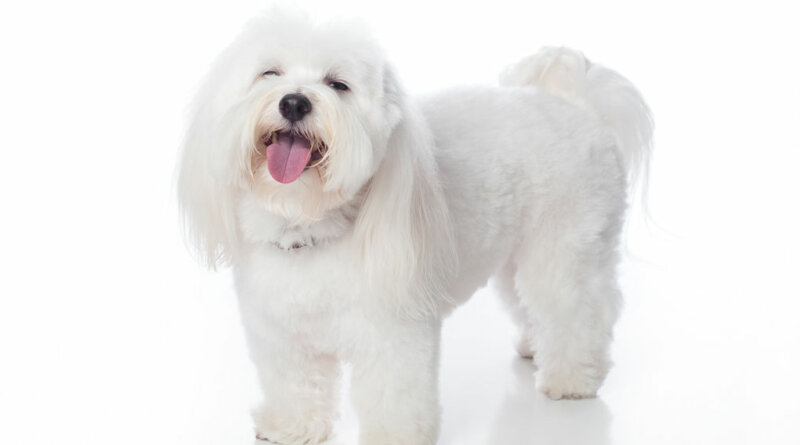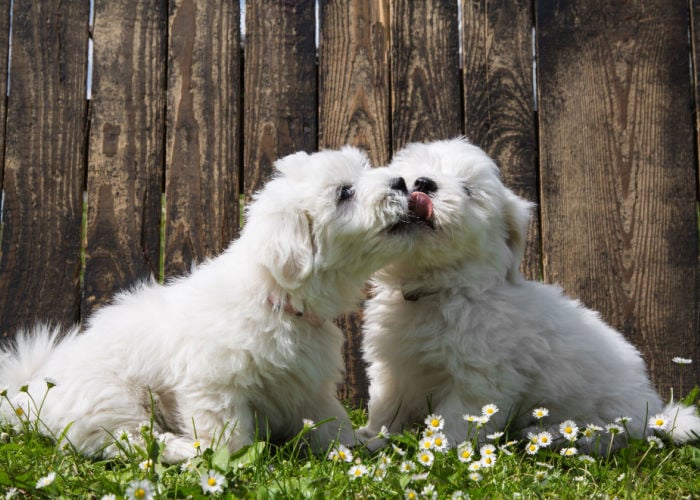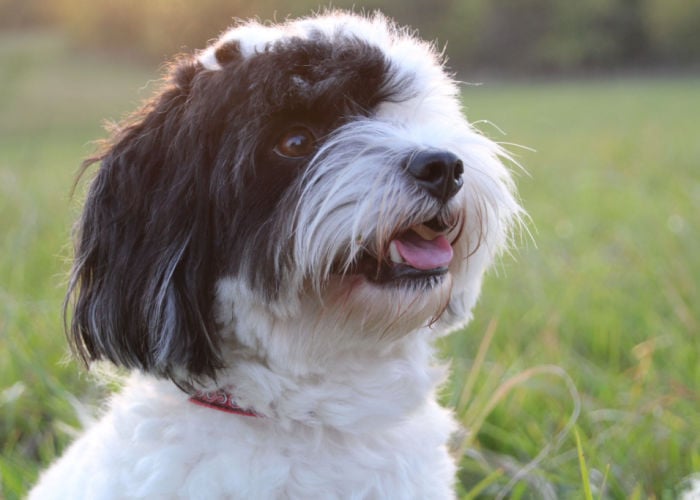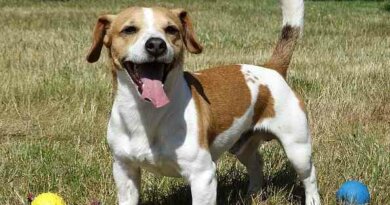Coton de Tulear Dog Breed Profile – Top Dog Tips
THERE’S PROBABLY NO OTHER DOG BREED that’s going to be as charming, as bright, and as happy-go-lucky as the Coton de Tulear.
This literal furball of fun and sass likes following its owner around the house to goof and bond with them.
And with its mostly white and fluffy fur, there’s no questioning why it is named after cotton.
Also, do you know that this french white dog is also considered the official dog of Madagascar? Yep.
In this article, let’s learn more about the Coton de Tulear—where they are from, their personality and temperament, possible health issues to look out for, and what sets them apart from other cute and small dog breeds.
Coton de Tulear Dog Breed: An Overview
The Coton de Tulear, also known as the ‘Royal Dog of Madagascar,’ is part of the non-sporting group breed.
They are mostly kept as companion dogs and can be the perfect choice for first-time dog owners.
The American Kennel Club describes this breed as having a “joie de vivre” expressive smile and witty personality.
Their cotton-like coat may just be the main highlight of their physical appearance.
However, they are mostly confused with Bichon Frise or a Maltese—no doubt as they are actually related to one another.
The ideal height for Coton de Tulear is 9 to 10 inches for females and 10 to 11 inches for males. An adult-size Coton usually weighs 8 to 15 pounds.
When cared for properly, a Coton de Tulear’s lifespan can reach 15 to 19 years.
Because of their size, they are pretty much adaptable to any living setting.
They’d happily settle with their humans whether it be in a large farmhouse or in an apartment.
Origin of Coton de Tulear
Coton de Tulear is a noble breed. They were once the favorite companion and lapdogs of the aristocrats in Madagascar.
Although Madagascar is a country in East Africa, they associate more with the French people and culture because they were once colonized by the European country.
The French language is still widely spoken there, hence the name given to the Coton de Tulear.
While Coton obviously means cotton in French, Tulear is named after the famous city and seaport Tulear in Madagascar (now named Toliara) where this breed was said to have started off on the island.
Legend has it that a pack of small white dogs swam toward the port when the ship they were boarding on was wrecked. (Yes, just like straight from a fairytale book!)
These dogs might have been Maltese, as white dogs like Malteses were once traded off as luxury items via ships going around the Mediterranean and North Africa.
The dogs learned to adapt to the island life where they mated and bred with the local canines that later on resulted in the Cotons we know this day.
The elites had been so fascinated with the new breed of dogs that they once passed laws prohibiting normal people (or those outside the ruling class) from owning a Coton de Tulear.
It was only in the 1960s that the world discovered this breed’s existence thanks to a couple of French tourists in the area.
In the 1970s, they were brought over to France, and later to America where they have been regarded as the Royal Dog of Madagascar.
Their royal status was affirmed when the country released a stamp in 1974 with its image.
This dog was only formally recognized as a breed by the Societe Centrale Canine in 1970, while the AKC in 2014.
Traits and Characteristics of Coton de Tulear
Perhaps the most notable characteristic of this breed is their naturally long, profuse, cotton-like coat.
AKC recognized white as the only standard color for a Coton de Tulear.
On the other hand, black is the non-standard and the only other color available.
Slight gray and/or yellow or tan markings are also the standard, but tri-colors and white are also accepted.
These markings are usually concentrated on or around their ears.
Although they may be small, they are sturdy and don’t appear fragile. Their body is also longer than high.
They have rounded dark brown or black eyes which were set wide apart and rimmed with black pigment.
Their triangular ears are pendulous and are set high above the line of the eyes.
Apart from their appearance, Coton de Tulears sure are talkative!
Although they’re not a barker, they do unique and adorable vocalizations when you talk to them.
Just look at how cute the Coton is in the video below saying hello!
Coton de Tulear’s Personality and Temperament
When we say Coton de Tulears are affectionate with their family, trust us, they really are!
In fact, they are affectionate to the point of being clingy.
That’s why expect that it’s going to be difficult leaving them alone in the house by themselves.
But however clingy they may be, they won’t do good as watchdogs.
They’d probably welcome any strangers in your house with an enthusiastic bark and a welcoming lick.
And because they have been bred as companion dogs since the beginning, they have a very little prey drive.
But this only means Coton de Tulears are also very good with children and other pets, too.
They’re definitely people-pleasers; they’d goof around to get a good laugh and praise from their humans.
Also, female Cotons tend to be more independent than male ones.
How to Care for a Coton de Tulear
However small and cotton-like they may be, you’d be surprised that they actually aren’t high-maintenance as you thought they may be.
Grooming Needs
Coton de Tulears are low-shedders, so allergic owners will sit well in caring for them.
But because of their wiry fur, it’s best to brush their coat at least 3 to 4 times a week using a pin brush or metal comb to prevent matting.
Pay special attention to the areas behind the ears, legs, and elbows as these are the most prone to matting.
Using a spray-on conditioner for dogs will also help to keep their shiny and healthy appearance and minimize breakage.
Bathing them once every 3 weeks or once a month should be enough—depending on how dirty and stinky they’d be.
To keep their color as white as their namesake cotton, it’s best to use whitening shampoos.
It’s also advisable to pat them dry instead of rubbing them using a towel to prevent knotting in their coat.
Some owners keep their Coton’s fur short and more manageable through a puppy clip and a topknot.
Same with other dog breeds, it’s better to brush their teeth 2 to 3 times a week, if not daily, to prevent any dental diseases.
Ears should be regularly cleaned, too.
Nails should also be trimmed as needed, especially since Cotons tend to jump up on people to greet them.
Training Needs
Coton de Tulears are pretty active.
As long as they have enough space to run around the house, that’d be enough physical activity for them for a day.
In fact, they’d be happy to do whatever their owners wanted to do!
But, of course, it’s still best to give them their outdoor time. A 30-minute walk once or twice a day should be enough to exercise an otherwise couch-dog Coton.
Because they are people-pleasers, they’d be fairly easy to train. Just make sure to use the praise-and-reward technique to encourage them to continue learning.
Also, remember to keep the training session lively and entertaining so as not to bore them.
Cotons have the potential to excel in most dog-sport activities when trained with positive methods.
They also make excellent therapy dogs.
And just like any other breeds, it’s best to start Coton de Tulears with training and socialization while they are still puppies.
House and crate training may be difficult in the beginning, but it’s going to be well worth teaching them when to potty and to stay out of trouble.
They’d do well by keeping a scheduled routine for these things.
Feeding Needs
Coton de Tulears are also at risk of obesity if they overeat. Giving them vet-approved dog food appropriate for their age is important.
Experts recommend about 3/4 cup daily of high-quality dog food divided into 2 meals.
This is better instead of just leaving food for them all the time.
Since giving treats is also needed especially when training them, make sure that you keep it to only at least 10% of their recommended daily calorie intake.
If you want to go the extra mile and prepare your Coton’s meal at home yourself, make sure to consult first with the veterinarian as to what food is best to feed him.
You can check out our recipes for healthy and homemade dog food recipes for all breeds.
RELATED: 20 Most Healthy Homemade Dog Food Recipes
Coton de Tulear Health Issues
All dog breeds have certain health issues owners would want to look out for—and Coton de Tulears aren’t exceptions to the rule!
Skin Allergies
Dogs get skin allergies too and Coton de Tulears are actually prone to them!
Skin allergies often cause itchy skin in dogs that later on might lead to bacterial infections such as pyoderma.
Although allergies are easily manageable with proper care and treatment, they can still cause serious problems if not immediately taken care of.
Luxating Patella
Small dog breeds like the Coton are also prone to getting Luxating Patella, where the knee bone (patella) slips in and out of place.
This is mostly a hereditary disease that can be aggravated with a Coton’s love for running and jumping up and down furniture and stairs.
Hip Dysplasia
Another disease that can be inherited is Hip Dysplasia.
This is pretty common for all breeds, especially for larger ones, but doesn’t mean smaller dogs like Cotons are spared from it.
Here, the ball and joint of the hips don’t form or develop properly, resulting in its deterioration and dysfunction.
Limping, lameness or general weakness in the legs are the common symptoms of hip dysplasia.
If not treated properly, this can lead to osteoarthritis or degenerative joint disease.
Eye Diseases
Any dogs with coat or fur that goes over the eyes are prone to eye diseases.
For Coton de Tulear owners, Progressive Retinal Atrophy (PRA) and Canine Multifocal Retinopathy 2 are the ones to look out for.
Progressive Retinal Atrophy is the degradation of sight due to the loss of photoreceptors at the back of the eye.
Fortunately, this can be diagnosed years before blindness sets in.
Canine Multifocal Retinopathy 2, on the other hand, is a rare genetic condition characterized by areas of retinal detachment.
While it doesn’t typically lead to blindness, it causes blisters around the eyes starting from around 15 weeks of age.
Intervertebral Disc Disease (IVDD)
IVDD or Intervertebral Disc Disease happens when the discs in the spine rupture, slip, bulge, or herniate.
The risk of getting this can be prevented by limiting roughhousing or any activities that put pressure on your Coton’s back.
IVDD can be quite fatal if not prevented, and it can be treated via surgery.
The United States of America Coton de Tulear Club, the national breed club for this dog, recommends getting the following screening tests for Cotons:
- Patella Evaluation
- Cardiac Exam
- Ophthalmologist Evaluation
Coton de Tulear Fun Facts!
- Coton de Tulear is pronounced as “cotawn day too-lee are.”
- Cotons can be howlers and they have unique vocalization skills.
- Although they are a non-sporting breed, they can still compete in AKC Companion Events like Obedience, Rally, Tracking, and Agility competitions.
- They are the 179th breed of AKC, having only been recognized in 2014.
- This small breed loves walking or dancing around on its hind legs! They’d absolutely do anything to keep their human’s attention and affection.
- Famous owners of Cotons include Carrie Fisher, Barbara Streisand, Debra Messing, and Jane Fonda.
FAQs on Coton de Tulear
How rare is Coton de Tulear?
While Coton de Tulear became a pretty popular breed in America because of their natural cuteness, this breed is still facing extinction up to this date due to a small gene pool.
Although it’s still the official dog of Madagascar, political and economic issues in the country also affected the breeding and population of Coton de Tulear.
Good thing, there are now organizations dedicated to preserving this dog breed, one of which is The United States of America Coton de Tulear Club.
What is the difference between a Bichon Frise, a Coton de Tulear, and a Maltese?
With their appearance, it’s easy to confuse a Bichon Frise, a Coton de Tulear, and a Maltese with one another.
However, the key difference between the three breeds is their size and coat color.
Bichon Frise is slightly larger than a Coton de Tulear, and the former only has white fur in contrast to the variety of colors and markings a Coton can have.
In comparison, Maltese is the smallest among the three. That’s why it belongs to the Toy Group breed.
This dog is also much more fragile than a sturdy Coton de Tulear.
Apart from their appearance, these three breeds also have differences in their behavior and personalities.
Can a Coton de Tulear be left alone for 8 hours?
Coton de Tulears can be extremely attached (borderline clingy!) to their humans, so leaving them for 8 long hours may not be the best idea.
As any other dogs do, they can also suffer from separation anxiety which leads to unwanted behavior and destruction inside the house.
But with the proper training, they can gradually learn to adjust and realize that coming and going is normal.
However, they’d still do best in a house where they can have a constant companion.
Coton de Tulear Dog Breed — Final Thoughts
Novice owners, experienced owners, singles, family with kids—no doubt Coton de Tulear can be the perfect canine companion whatever lifestyle you have.
But just like caring for any breed, it’s important to know facts about Coton de Tulears—especially their personality and temperament, possible health issues, and their care needs.
Being a responsible pet owner to the national dog of Madagascar is also helpful in preserving this breed and protecting it from extinction.
READ NEXT: Top 15 Small Dog Breeds That Don’t Shed Or Bark
Related








